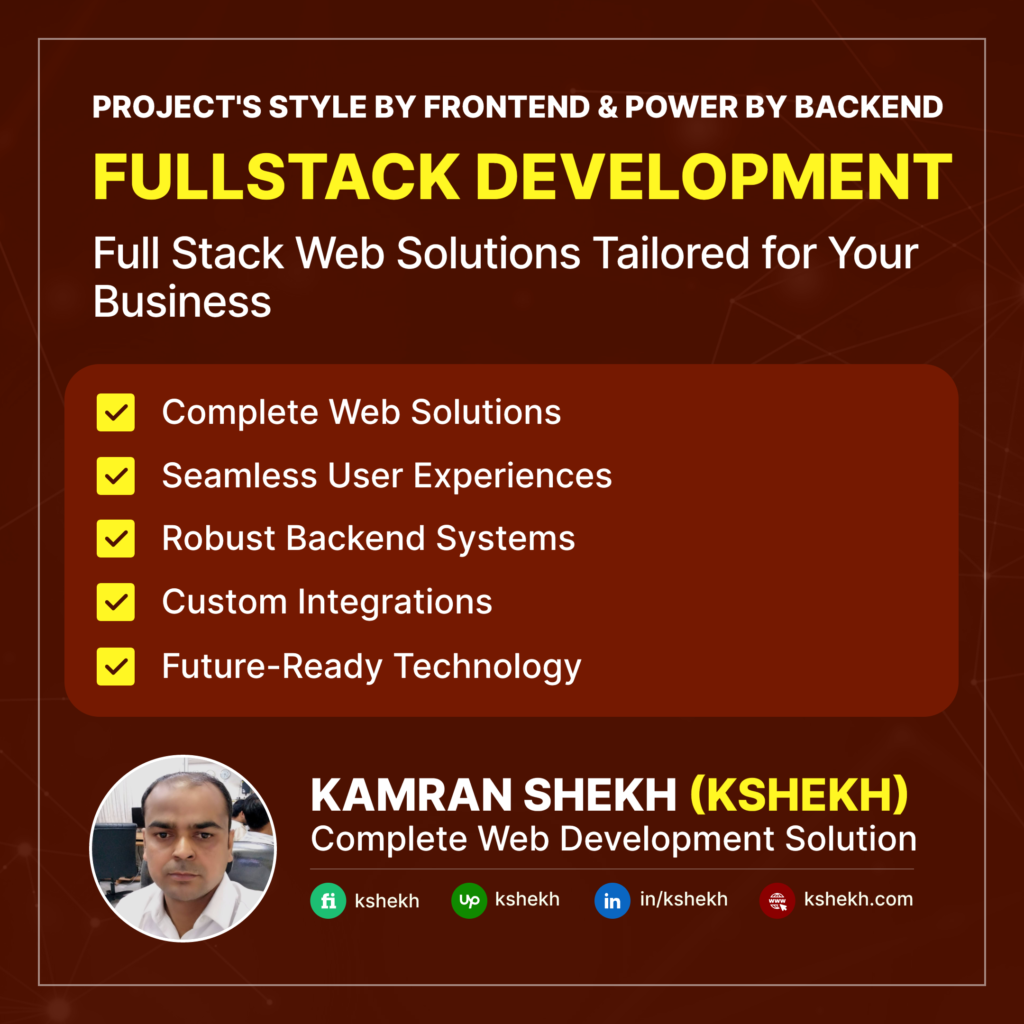Understanding Web Development: Building the Web One Step at a Time
Web development: Where creativity meets functionality.
Web development is the art and science of creating and maintaining websites and web applications that run in browsers. It’s about turning ideas into fully functional digital experiences, combining web design and coding to bring creative visions to life. From simple informational websites to complex web applications, web development covers it all.
Whether you’re displaying business information or crafting interactive features like user logins, online purchases, or real-time chat, web development basics include everything needed to transform user needs into accessible, engaging online platforms.
Let’s dive into the three core areas of web development: frontend, backend, and full-stack development, exploring how they come together to create seamless digital experiences.

Overview of Frontend Development
Frontend development is all about what users see and interact with directly in their browsers. It bridges the gap between web design and coding, turning static designs into functional web pages.

Key Features:
- Web Design: Translating layouts, colors, buttons, and typography into code.
- User Experience (UX): Ensuring the site is intuitive, navigable, and delightful to use.
Essential Tools and Technologies:
- Core Web Languages: HTML, CSS, JavaScript
- Frameworks and Libraries: React, Vue, Angular, Svelte, and Next.js
Frontend developers bring designs to life by making them responsive, visually appealing, and interactive, ensuring users have the best experience possible.
Overview of Backend Development
Backend development powers the hidden, behind-the-scenes functionality of websites and applications. It handles everything from server management to database operations, ensuring the frontend works seamlessly.

Key Features:
- Core Web Languages: HTML, CSS, JavaScript
- Frameworks and Libraries: React, Vue, Angular, Svelte, and Next.js
Popular Tools and Technologies:
- Languages: Python, Java, PHP, Ruby, C#
- Frameworks: Node.js, Django, Laravel, Spring Boot, .NET Core
Backend developers focus on reliability, performance, and security, ensuring the application’s foundation can handle its purpose effectively.
Overview of Full-Stack Development
Full-stack development combines both frontend and backend expertise. Full-stack developers are like Swiss Army knives of web development, capable of handling the entire project lifecycle.

Benefits of Being Full-Stack:
- Versatility: Manage both design and functionality.
- Streamlined Workflow: Seamlessly transition between client-side and server-side development.
By understanding both ends of the spectrum, full-stack developers can create cohesive, end-to-end web solutions.
The Web Development Process
Web development isn’t a single-step process; it unfolds through multiple phases requiring unique skills and tools:
1. UI/UX Design
The journey begins with crafting the visual blueprint:

- User Interface (UI): Creating layouts, buttons, colors, and typography.
- User Experience (UX): Ensuring ease of use and enjoyment.
- Popular Tools: Figma, Adobe XD, Sketch, InVision
2. Frontend Development
This phase involves coding the user-facing part of the site, making it interactive and visually appealing.
3. Backend Development
Backend development ensures that the app runs smoothly, storing and retrieving data and managing application logic.
4. Database Management
Securely storing and organizing vast amounts of data is a key part of web development.
Popular Systems: MySQL, PostgreSQL, MongoDB, Firebase, Redis
5. Integration and Deployment
After development, everything is tested, integrated, and deployed. Continuous integration and deployment (CI/CD) pipelines streamline updates and releases.
Copyright © kshekh.com All Rights Reserved

